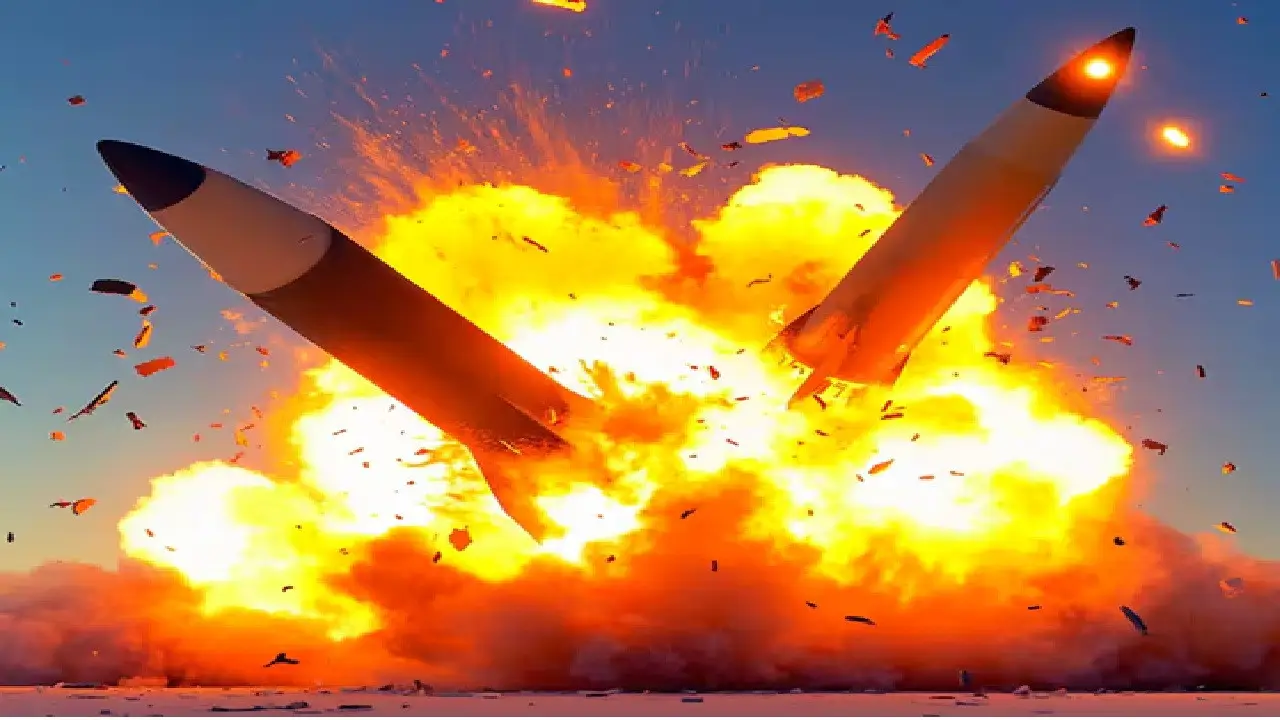
Missile Attack (Social Media)
International News: In the world of modern warfare and strategic defense, nuclear missiles are seen as the most fearsome and decisive weapons a nation can possess. There is a widely held assumption that if two such missiles were to collide mid-air, it would trigger a catastrophic nuclear explosion, spreading devastation across the earth. But how much truth is there in this notion? Can a collision in the sky between two nuclear weapons truly lead to a massive detonation?
The answer is far more grounded in science—and far less terrifying—than popular belief.
Let’s start with the basics. A nuclear bomb is not like a grenade or traditional explosive—it cannot simply "go off" because of a crash. It is an intricately engineered device that only explodes under very precise conditions.
Nuclear weapons work through a chain reaction, typically using fissile materials like uranium-235 or plutonium-239. To trigger this reaction, a highly sophisticated mechanism must initiate a carefully timed implosion or compression of the core. This includes conventional explosives, timing switches, and precise alignment—none of which would happen during a random impact.
So, in simple terms, a mid-air collision between two missiles will not set off a nuclear explosion. The conditions required for a nuclear blast are simply too complex to be activated accidentally.
Now imagine two nuclear-armed missiles colliding mid-flight. What would be the likely outcome?
In short, a mid-air collision would be destructive but not apocalyptic.
Globally, nuclear weapons are built with multiple layers of security to ensure they cannot be detonated accidentally. This engineering philosophy is called “Fail-Safe Design.” Some of its key aspects include:
Launch Codes and Arming Systems: Nuclear devices cannot detonate without specific authorization codes and arming sequences held by high-ranking military officials.
This meticulous design makes it practically impossible for a nuclear device to explode simply due to an accident or collision.
While a nuclear explosion is highly unlikely from a collision, some risks still remain:
There are historical incidents where nuclear weapons came dangerously close to unintended detonation. One of the most famous was the 1961 Goldsboro incident in the United States, where a B-52 bomber carrying two hydrogen bombs broke apart mid-air. One of the bombs initiated all but one step in the detonation sequence. Fortunately, the final fail-safe switch prevented disaster.
This chilling example demonstrates two things:
While extremely unlikely, let’s explore a hypothetical scenario where a mid-air collision somehow causes both warheads to detonate:
The idea of two nuclear missiles crashing and causing a nuclear holocaust may be thrilling material for Hollywood films or sci-fi thrillers, but it doesn't hold much weight in the real world of physics and military design. Modern nuclear weapons are engineered with such high standards of control, safety, and security that accidental detonation via collision is virtually impossible.
That said, the incident could still trigger political panic, diplomatic crises, or even retaliatory military action if misunderstood. In that sense, the true danger is not in the science—but in the politics.
Nuclear weapons are not toys of destruction—they are instruments of deterrence, engineered with complex systems to prevent accidental use. But the responsibility of owning them comes with the need for extreme caution, diplomacy, and ethical foresight. Instead of fearing accidental apocalypse, the world must focus on reducing tensions, fostering dialogue, and promoting disarmament. In the end, the most powerful weapon a nation can wield is not its arsenal—but its commitment to peace.





Copyright © 2025 Top Indian News
